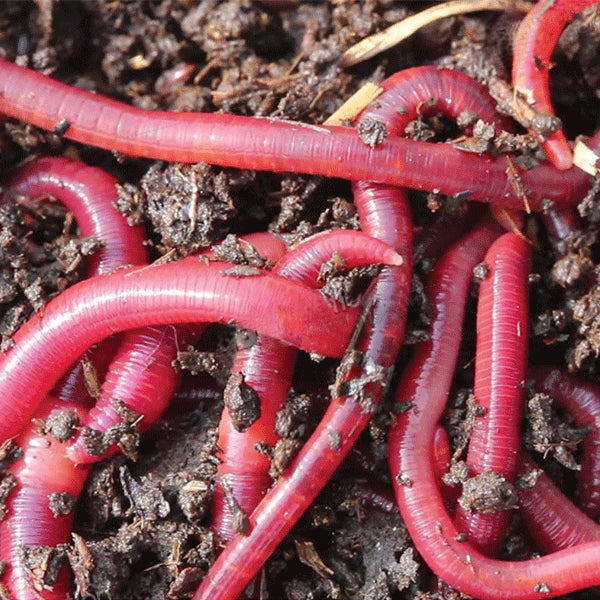Organic farming red worms: Guide to thriving setups
Organic farming red worms: Guide to thriving setups
Blog Article
Using Red Wigglers for Reliable Organic Waste Disposal
These worms not just enhance waste decay yet additionally yield important worm spreadings, which can dramatically improve soil health. Understanding the nuances of setting up a successful worm container and keeping an optimum environment is essential for maximizing their benefits.
Benefits of Utilizing Red Wigglers
Among one of the most engaging benefits of making use of red wigglers for natural garbage disposal is their impressive efficiency in composting. These worms, scientifically known as Eisenia fetida, are specifically adapted for breaking down organic materials, enabling them to process waste up to twice their body weight each day. This quick disintegration not just increases the composting procedure yet additionally generates nutrient-rich worm castings that significantly enhance dirt high quality.
Furthermore, red wigglers add to a decrease in landfill waste. By diverting natural materials from landfills, they aid minimize methane exhausts-- a powerful greenhouse gas. This environmental benefit is essential in the battle against environment adjustment.
In addition, red wigglers are low-maintenance and can flourish in various atmospheres, making them obtainable for both beginner and skilled composters. Their capacity to reproduce quickly makes certain a constant populace, helping with recurring waste handling.
Setting Up Your Worm Bin
Creating an efficient worm bin is crucial for making the most of the benefits of composting with red wigglers. The initial action is picking a suitable container. A container made from plastic or wood, with an ability of 10 to 20 gallons, is suitable. Guarantee the bin has appropriate drainage holes to avoid excess wetness, as red wigglers grow in a wet but not soggy atmosphere.
(red wiggler fishing worms)Following, prepare the bed linens material, which offers as the worms' environment and food source. Shredded paper, cardboard, and coconut coir are outstanding options. Goal for a bed linen deepness of around 4 to 6 inches. The container should be placed in a dark, temperature-controlled area, preferably in between 55 ° F and 77 ° F, to preserve worm activity.
Once the bin is established, present the red wigglers, allowing them to adapt to their new setting. It's critical to monitor wetness degrees and temperature level routinely. A well-kept bin will not just sustain the health of the worms yet additionally help with reliable decomposition of organic waste. By following these guidelines, you can develop a thriving ecosystem that adds to sustainable waste monitoring.
(redworms for composting)
What to Feed Red Wigglers
An understanding of the proper diet regimen for red wigglers is essential for keeping a healthy and balanced worm populace and enhancing composting effectiveness. Red wigglers prosper on a diverse diet plan that mainly consists of organic products. Perfect food resources include vegetable scraps, fruit peels, coffee grounds, eggshells, and shredded paper. These things not just give crucial nutrients yet additionally contribute to the wetness balance within the worm container.
It is important to avoid particular foods that can hurt the worm population. Red wigglers need to not be fed meat, milk products, oily foods, or refined products, as these can attract parasites and produce undesirable smells. red wigglers. Additionally, citrus fruits and zesty foods ought to be minimized, as their level of acidity can be harmful to worms
Checking the worm bin for food usage prices will certainly help make sure that red wigglers are obtaining an adequate diet plan while preserving a reliable composting environment. Appropriate feeding methods are essential for fostering a prospering ecological community within the worm bin.
Maintaining Your Worm Habitat
A well-kept worm habitat is vital for the health and wellness and efficiency of red wigglers. To make sure ideal conditions, it is important to keep track of temperature, moisture, and aeration within the worm container (red wigglers).
Dampness degrees must be kept consistent; the bedding needs to be wet yet not soaked. A great policy of thumb is to preserve moisture at approximately 70% to 80%. If the bed linens comes to be as well wet, it can lead to anaerobic problems that are dangerous to the worms. Adding dry carbon-rich products, such as shredded paper or cardboard, can assist absorb excess dampness.

Making Use Of Worm Castings in Gardening
Rich in nutrients and advantageous bacteria, worm castings work as an outstanding natural plant food for horticulture. Generated via the digestive system procedures of red wigglers, these spreadings have a selection of essential nutrients, consisting of nitrogen, phosphorus, and potassium, which advertise durable plant development. Unlike artificial plant foods, worm spreadings supply a slow-release device, guaranteeing that nutrients are available to plants over a prolonged duration, consequently lowering the danger of nutrient leaching and soil exhaustion.
Along with vitamins and mineral web content, worm spreadings improve dirt structure and aeration, enhancing moisture retention and water drainage. The microbial life present in worm castings aids to reduce virus and promotes a healthy dirt community, additional profiting plant wellness. When included into the dirt or utilized as a top clothing, worm castings can considerably increase seed germination rates, origin development, and total plant vigor.
For ideal results, gardeners must apply worm castings at a price of 1-2 inches per square foot, mixing them right into the soil or including them into potting blends. On the whole, making use of worm spreadings is an environmentally friendly method to enriching dirt fertility and making sure growing garden settings.
Final Thought

Report this page